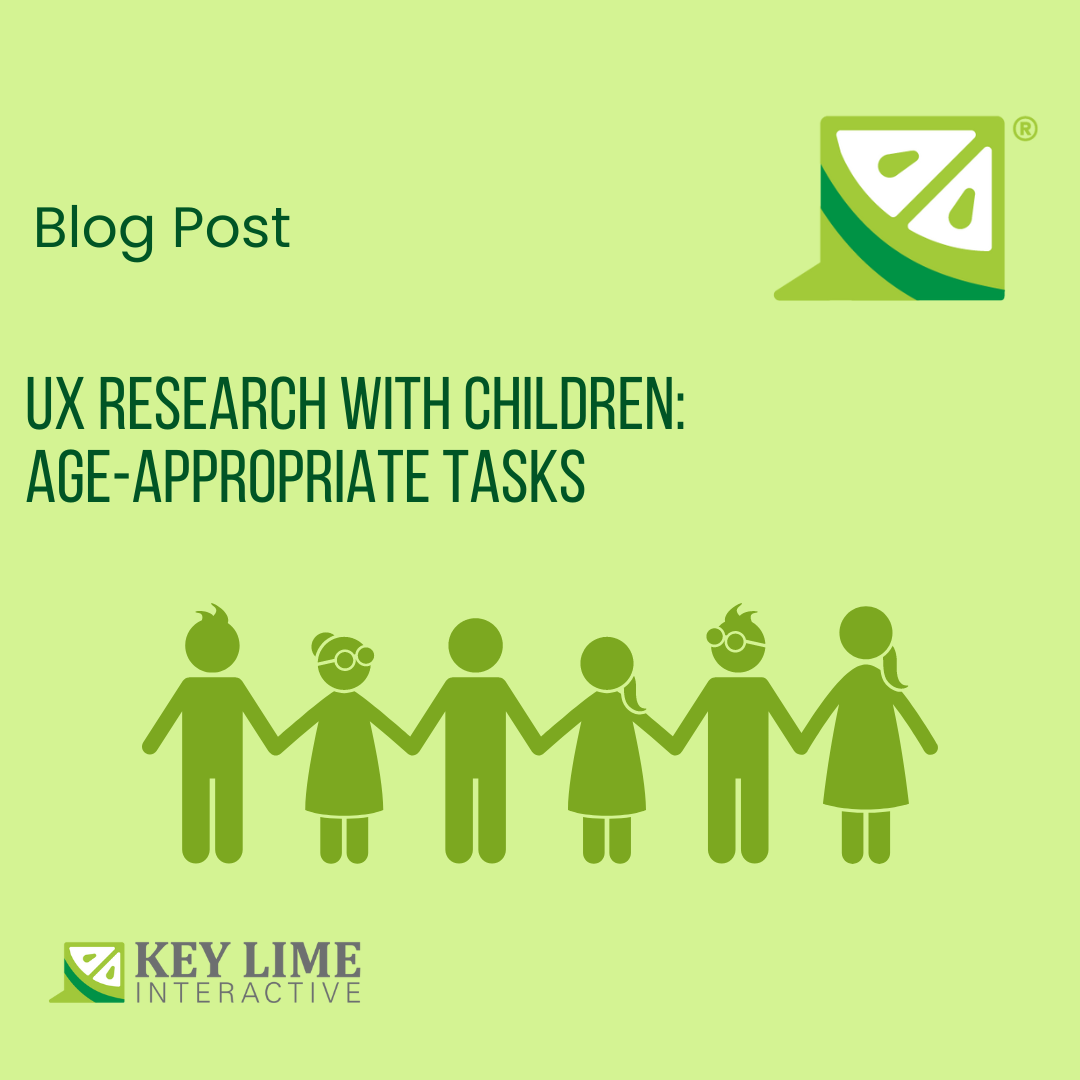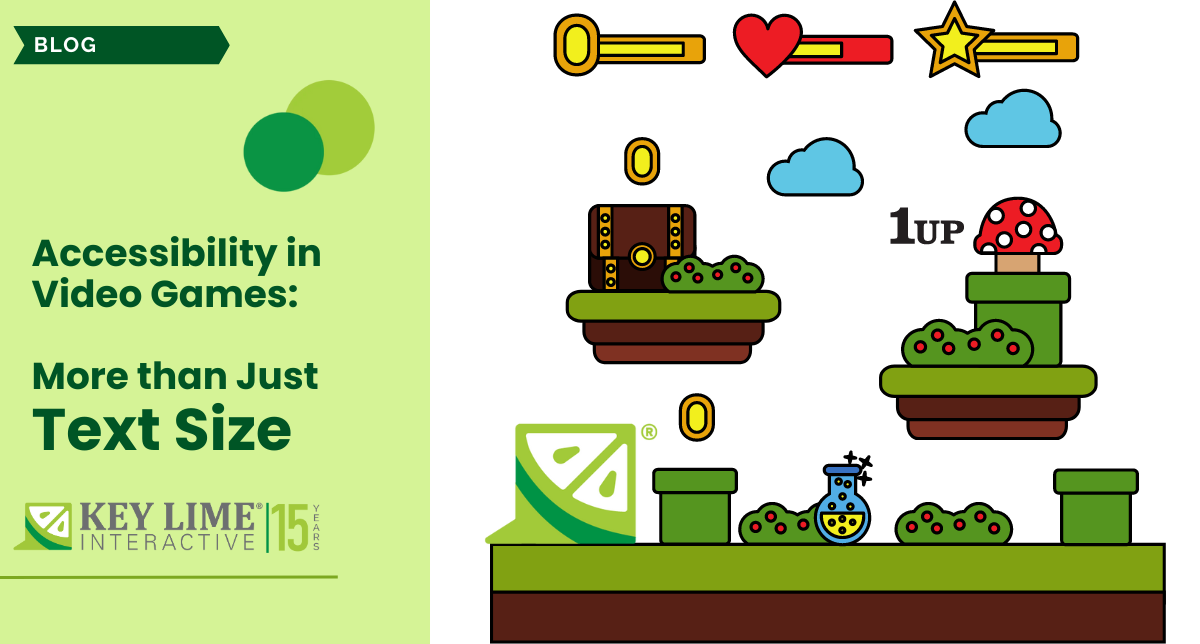
“Play is the highest form of research.” ~ Albert Einstein
As anyone who has spent significant time around children will tell you, kids can be hard. When you’re doing research with children, that “hard” can become even more salient. Conducting UX research with children comes with its own set of unique challenges, but it can be so rewarding. The research I’m most proud of are the projects in which I’ve been able to accurately capture children’s unique perspectives because I know those resulting insights will ultimately provide more engaging and meaningful experiences for children everywhere.
Although it is not easy, there are some steps you can take when designing and executing your research to ensure that you and the children you are working with are set up for success. One step is using age-appropriate language, which I covered in my last blog post. Another crucial step is using age-appropriate tasks. Below, I discuss the ways in which implementing age-appropriate tasks, particularly as related to children’s development, can result in more effective research.
Age-appropriate tasks, at their core, are meant to be fun and interactive. Children are usually happiest when they are at play. Just about any research task can be turned into a game by presenting the tasks as challenges with awards, badges, or stickers for each completed challenge. Tailoring your tasks to be playful can help keep children engaged, which ultimately leads to more authentic responses.
In addition to fun and interactive tasks, a basic understanding of children’s cognitive-developmental skills is particularly beneficial for ensuring your research is age-appropriate. When it comes to the methodological choices you’re making when designing a study, it’s vital to account for children’s developing executive function.
Executive function
Executive function is an umbrella term that broadly refers to different processes allowing an individual to control their thoughts, actions, and emotions. There are three core executive functions, and each must be considered to ensure tasks are age-appropriate.
- Inhibition: Inhibition is what allows children to control and direct their attention and focus. It is also what allows children to resist the temptation of interfering information. If you’ve ever wondered why children have such short attention spans, it’s because their inhibitory control is still developing, making it difficult to sustain focus on specific tasks.
When designing age-appropriate research, you might consider minimizing potential distractions by removing any unnecessary elements. Additionally, providing breaks in between tasks will allow children to rest and then reset their focus. Reducing distractions within tasks and working in “brain breaks” between tasks will help you capture and maintain children’s attention, allowing you to get the data you need.
- Working memory: Working memory involves retaining and working with information that is no longer present or available. This is how children make sense of information, mentally relate information to understand connections, and update mental connections as new information becomes available. In children, working memory is still developing, which may result in difficulty processing and retaining complex information. In practical settings, this means that children might not remember the instructions you gave five minutes ago.
To address children’s developing working memory capacity, you might consider designing tasks that can be broken down into smaller, more manageable chunks. Additionally, using visual aids and providing single-step, clear instructions can help minimize cognitive load, thus creating a situation in which children can successfully complete the tasks you’ve given.
- Cognitive flexibility: Cognitive flexibility centers around problem-solving abilities, such as perspective-taking and adapting to new environmental demands. Cognitive flexibility, which is sometimes referred to as shifting, is what allows children to shift between tasks. Imagine you have three tasks, each with a different set of instructions. Because their ability to shift is still developing, children will often attempt tasks two and three using the instructions from the first task.
To avoid maxing out or exceeding children’s ability to shift, you might consider providing flexibility within research tasks by allowing children to explore and navigate content in nonlinear ways. This can help eliminate the need to shift, while also ensuring all of the tasks are eventually completed.
A nonlinear, flexible approach has the added benefit of reducing the potential for carryover and fatigue effects. The carryover effect is the potential for experience gained in the first task to then affect performance and/or responses in subsequent tasks. Because children pick up on things really quickly, they are susceptible to learning information from the first task, and then “carrying over” that learning to the next task. Children are also susceptible to fatigue effects, because they tire more quickly than adults. When attempting to complete tasks they may not be particularly interested in, children can get frustrated and mentally drained. That is not an ideal scenario for gathering data that accurately captures children’s perspectives.
Allowing children to navigate the tasks in the order of their choosing is a modified approach to counterbalancing that can reduce the potential for these order effects while keeping children engaged and interested. For information on important considerations for mitigating the potential for framing effects and confirmation bias in research with children, check out our previous blog post on the topic.
When working with children, incorporating age-appropriate tasks that align with children’s executive function capabilities is crucial for conducting meaningful and effective UX research that successfully captures children’s unique perspectives.
At Key Lime Interactive, we recognize the importance of centering research around children’s developing abilities to provide meaningful insights. Contact us to explore how we can help with your next research project.










Comments
Add Comment